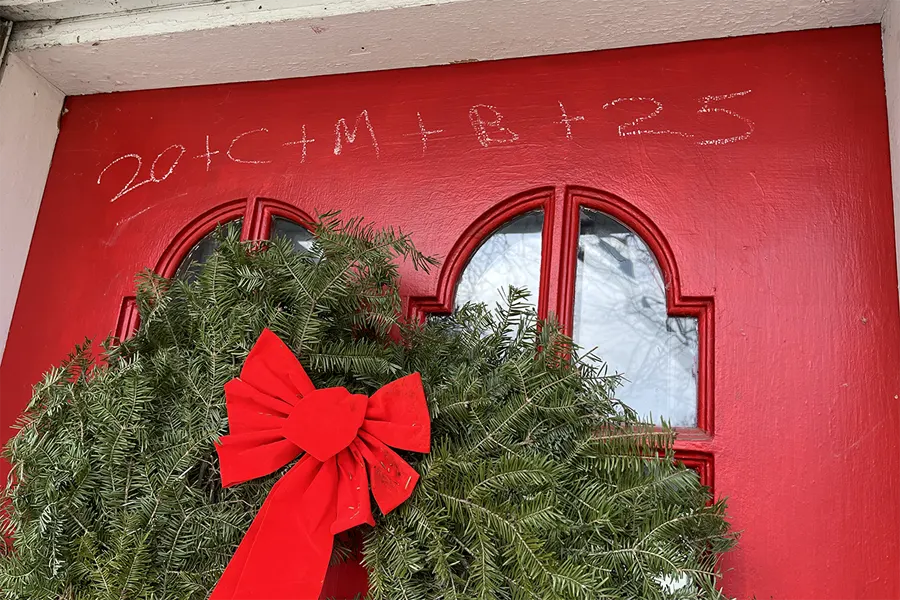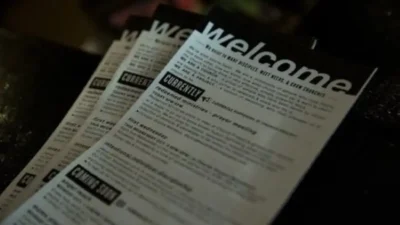[Episcopal News Service] From the Epiphany and continuing for days to come, more and more Episcopalians are joining other Christians around the world by writing in chalk this ancient yet ever-changing formula on their doors: 20+C+M+B+25.
The numbers, letters and symbols have been called “holy graffiti,” and some people suggest the combination looks like the start of an algebraic equation.
The letters C, M, B come from the traditional names for the wise men—Caspar, Melchior, and Balthazar. We celebrate Their arrival at Mary and Joseph’s home on the Epiphany. Tradition also says that three men visited the infant Jesus because the gospel writer Matthew, the only one who describes such a visit but does not number them, says they brought three gifts: gold, frankincense and myrrh. Their names appear in a Greek manuscript from 500 AD translated into Latin, which many biblical scholars consider the source of the names.
The letters are also an abbreviation for Christus Mansionem Benedicat, which means “May Christ bless this dwelling.” The first and last numbers refer to the current year, and the plus signs in between represent the cross.
Chalking the Door
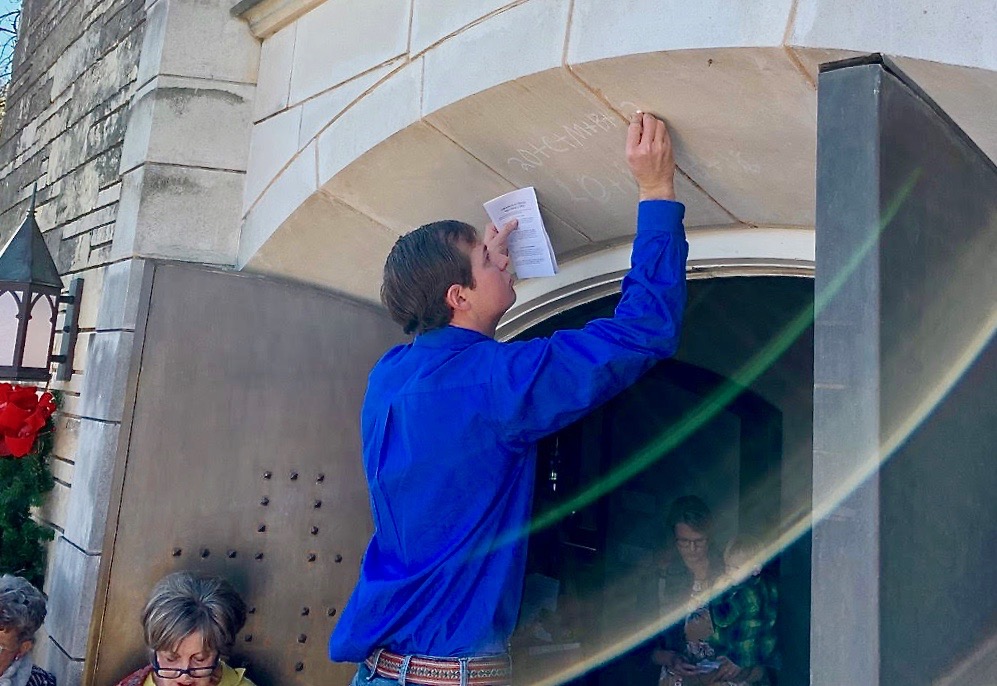
“Chalking the door,” as it is known, is seen as invoking Christ’s blessing not only on the physical house but on the people who live there and those who visit. There is a long tradition of blessing homes, especially on the Epiphany, which falls on January 6 each year, and the weeks that follow. Europeans have chalked their doors as part of Epiphany house blessings for centuries, especially Roman Catholics. The practice has become popular in the United States only relatively recently. You can do chalking simply with a short prayer or with songs, prayers, processions, incense and holy water. Clergy or laypeople can do the chalking.
The Episcopal Church recognized the practice five years ago. Its Book of Occasional Services historically has contained a liturgy for blessing each room of a house, along with a shorter Epiphany house blessing. When the Standing Commission on Liturgy and Music revised the book in 2018, the editors included chalking the door for the first time. They wanted to respect how the tradition had caught on among individual Episcopalians and their congregations, according to the Rev. Paul Fromberg, then a member of the commission. (Find the blessing on page 167 of the Book of Occasional Services [PDF].)
Spread of using chalk to bless homes
The Rev. Mike Marsh, rector of St. Philip’s Episcopal Church in Uvalde, Texas, told Episcopal News Service in 2020 that he was glad the tradition of door blessing is spreading.
“Given what’s going on in our country and in our world today, we need homes of refuge, whether you are a church member or not,” he said.
Marsh, who annually writes about the tradition on his “Interrupting the Silence” blog, blessed about 80 pieces of chalk during the Sunday Eucharist closest to Epiphany in 2020 so that parishioners could take some home to chalk their doors. They will use a copy of the prayer he suggests. The parish also keeps some chalk for neighbors who often come asking about the practice after they see the symbols on their friends’ homes.
“We’re all Magi, visitors bearing gifts to other people’s homes, and we’re all the Holy Family who received the visitors,” Marsh said. “The chalk reminds us of that. It’s a reminder that this is a home of refuge, it’s a home of love, it’s a home of Christ for you to come into. And, it’s not only for the guests who come into our homes; it’s a reminder to us when we come home that we have a home, that we have a refuge.”
As Epiphany and the days beyond it come and go, he said, the chalk fades, but the blessing remains.
“If all we do is chalk the doors and then it goes away, we haven’t done much,” Marsh said. “It needs to go into the home and into our hearts.”
Origins of the chalking tradition
The tradition’s origins are obscure, but the practice has its echoes in the story of the Israelite exiles in Egypt marking their doors with lamb’s blood so that the angel of the Lord will pass over their homes when it comes to kill the firstborn of Egypt. In Deuteronomy, the Israelites are told to write God’s words on their hearts, their gates and the doorposts of their houses, and to talk about them when they are at home.
Diocese of Central Pennsylvania Bishop Audrey Scanlan and her husband, Glenn, chalk the inside lintel of their front door so that the formula is a reminder to take their faith out into the world. Yet, she added, the “Christus Mansionem Benedicat” abbreviation “is really about an internal blessing, not a blessing of sending.”
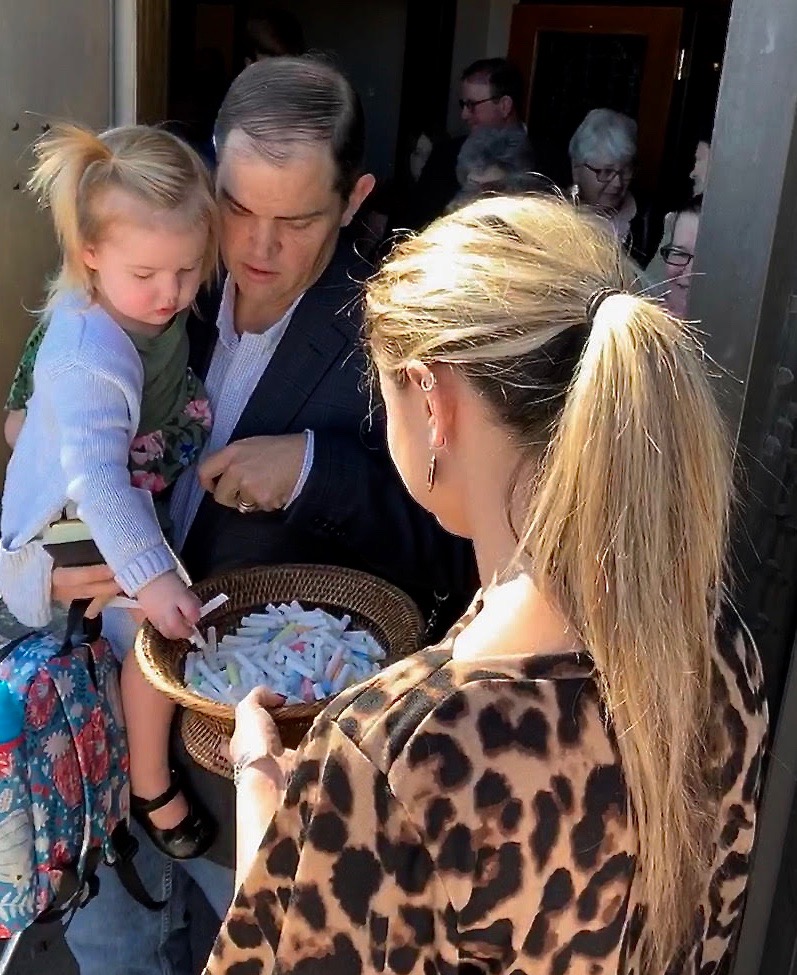
Symbolism of using chalk this way
Scanlan likened the chalked symbolism to the mezuzah, the small case on the right outside doorpost of Jewish homes that contains a scroll, which typically is inscribed with Deuteronomy 6:4-9 and 11:13-21. The verses tell of God’s covenant with Jews to protect them and help them flourish if they keep God’s law. They instruct Jews to write the words of the covenant on their doorposts as a reminder to them when they enter or leave a home.
Both the mezuzah and the door chalking are “a totem to remind us, coming and going, of our faith,” Scanlan said.
She first experienced chalking the door at Trinity Episcopal Church in Collinsville, Connecticut, the parish that sponsored her for ordination in the early 2000s. Her family has practiced it ever since. “One of the things that I’ve always coveted about other faith traditions is the prayer and expression of faith in the home,” she told ENS, adding that Episcopalians do not always explore the daily practice of faith. “I love the idea of bringing faith into the home,” she said.
Chalking as a public declaration
At some times and in some places, chalking the door has also been a far more public declaration of faith and refuge. Some say that in the years of Soviet dominance of Eastern Europe, the practice defied state-imposed atheism.
Marsh likes to link chalking the door to another Epiphany tradition: the ancient church’s practice of announcing the dates of Easter as well as other major feasts and fasts which, unlike Christmas and the Epiphany, do not have a fixed date. They are the following:
- Ash Wednesday.
- The Triduum [3 days of holy observance] of Good Friday, Holy Saturday, and Easter.
- Ascension.
- Pentecost.
- First Sunday of Advent.
Marsh has copies of the proclamation for people to take, along with their chalk and blessing prayers.
The so-called Easter Proclamation, he wrote, is about more than dates.
“Ultimately, it proclaims the reality that our lives are to be lived in rhythm with and according to Jesus’ life,” Marsh said.
The Rev. Mary Frances Schjonberg wrote this article in 2020. She retired in July 2019 as the Episcopal News Service’s senior editor and reporter. ENS updated this 2020 story slightly for Epiphany 2025.
Episcopal News Service
Episcopal News Service (ENS) offers in-depth reporting of local, regional, national and international news for Episcopalians and others interested in the church’s mission and ministry. Episcopal News Service is the official news source of the Episcopal Church.
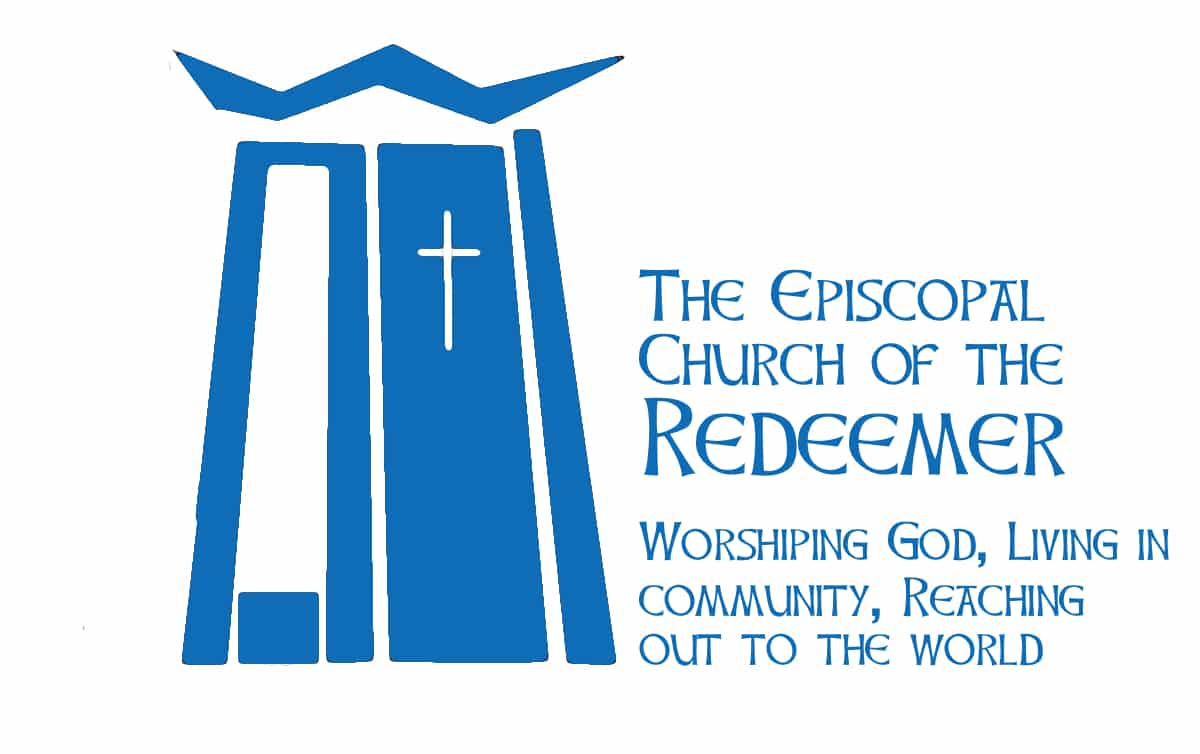
Church of the Redeemer
Church of the Redeemer: Worshiping God, living in community, and reaching out to the world around us. We are an Episcopal Church serving north King County and south Snohomish County, Washington. As you travel your road, go with friends walking the way of Jesus at Redeemer.
Church of the Redeemer is at 6210 Northeast 181st Street in Kenmore, Washington. The campus is a short distance north of Bothell Way, near the Burke-Gilman Trail. The entrance looks like a gravel driveway. The campus is larger on the inside than it is on the outside. And we managed to hide a large building on the side of a hill that is not easily seen from the street.
The Episcopal Church welcomes you.

